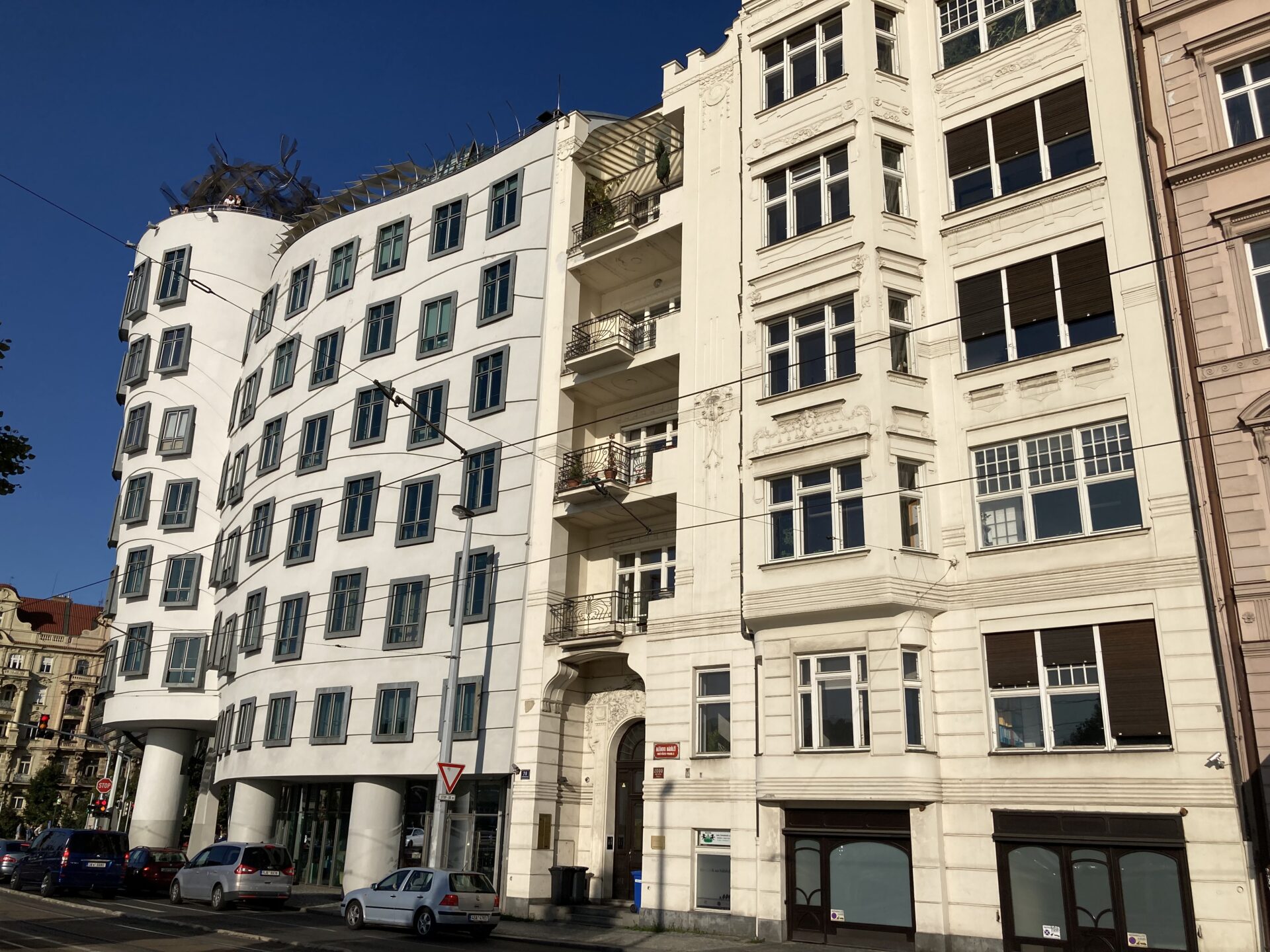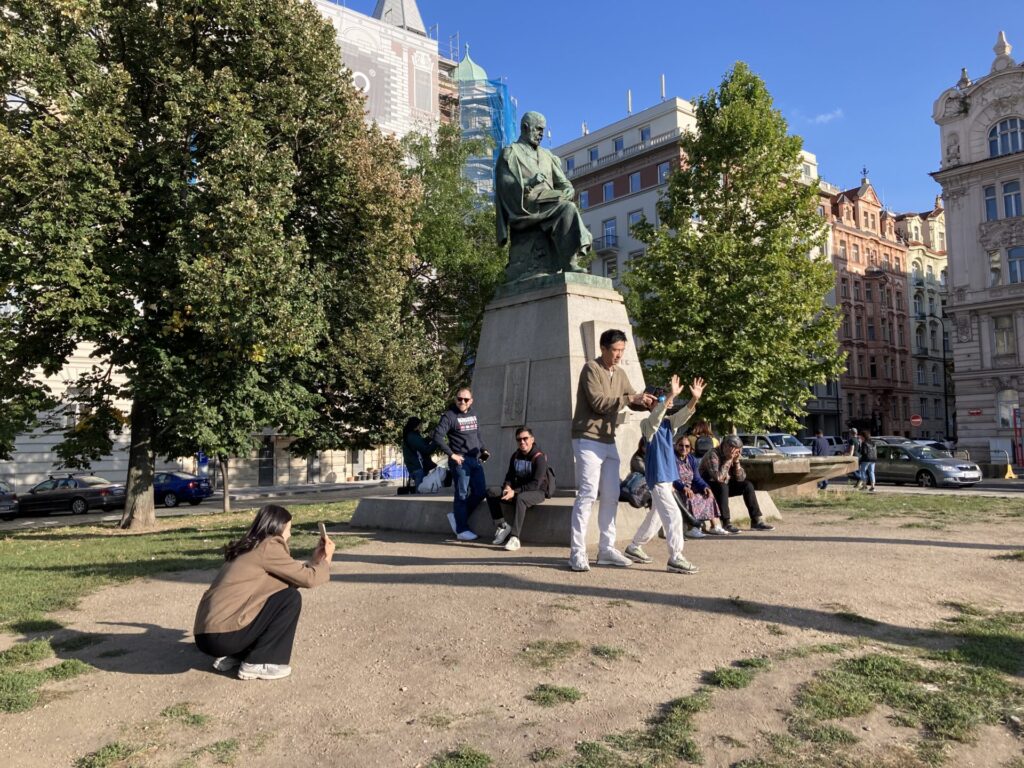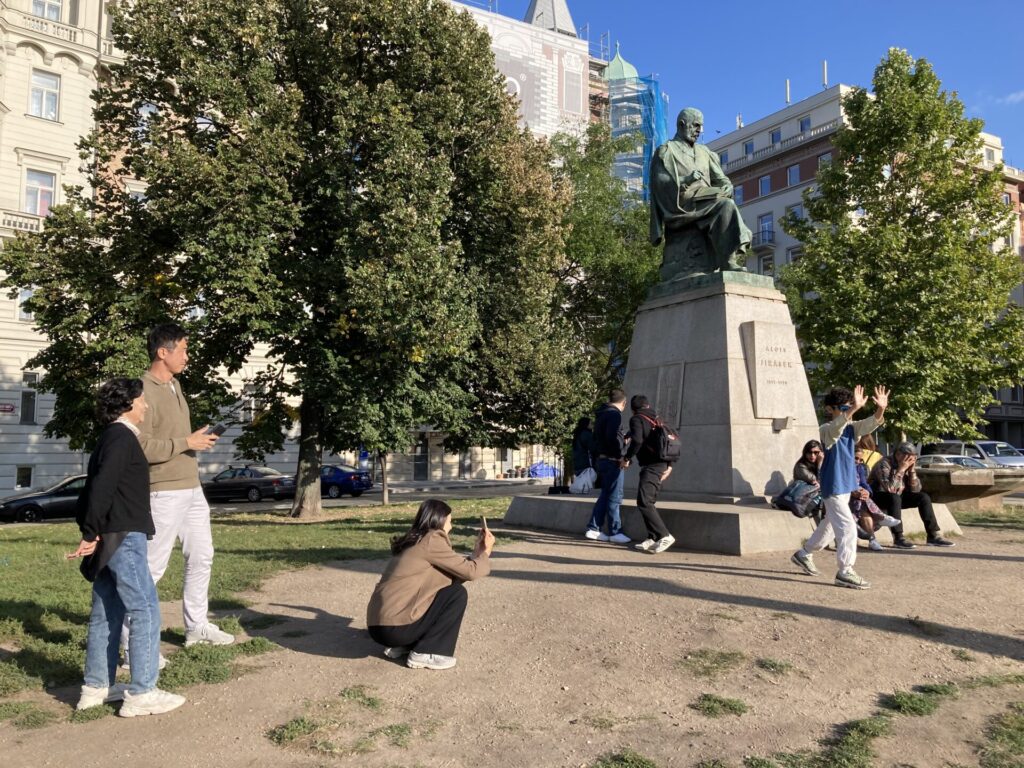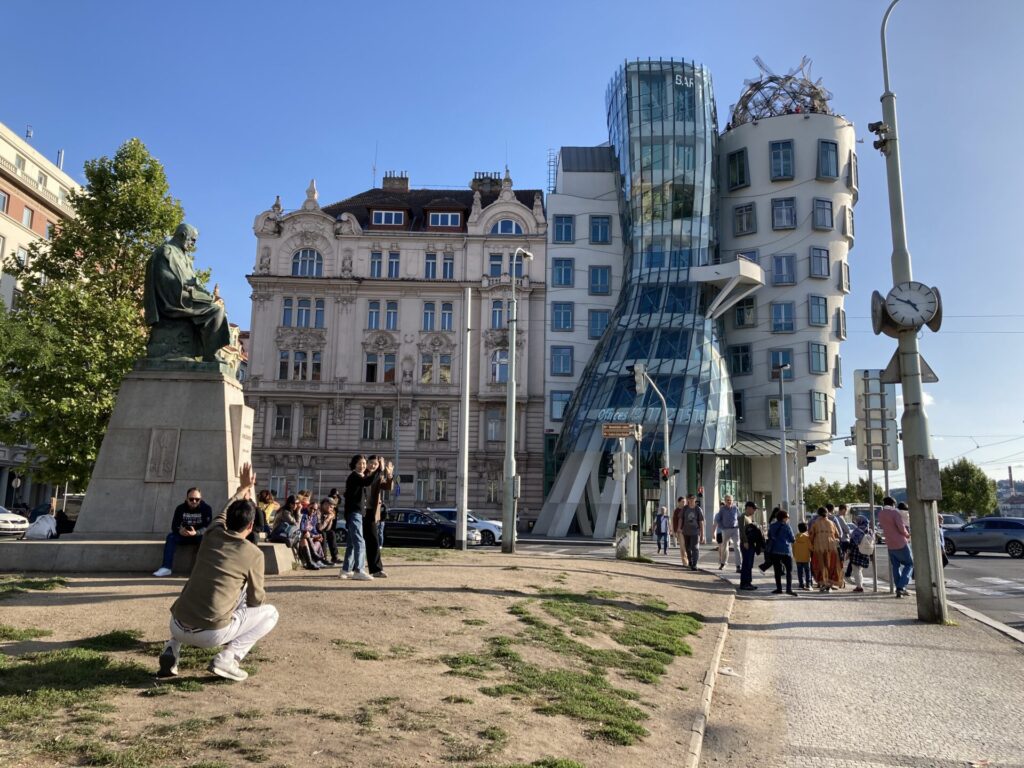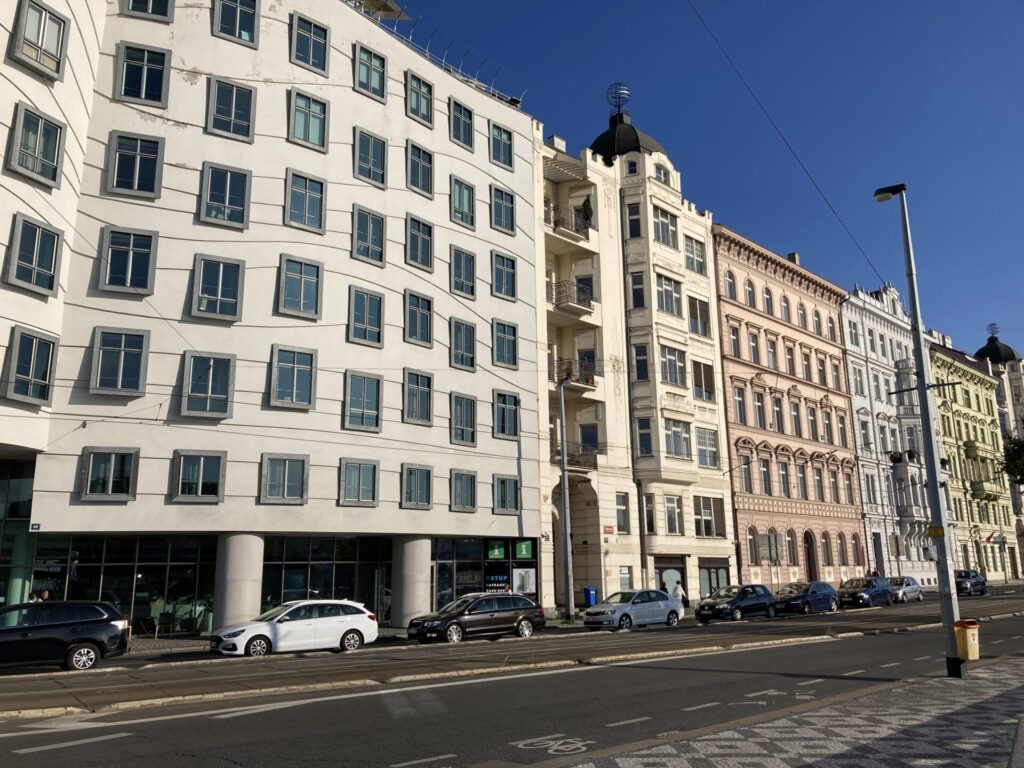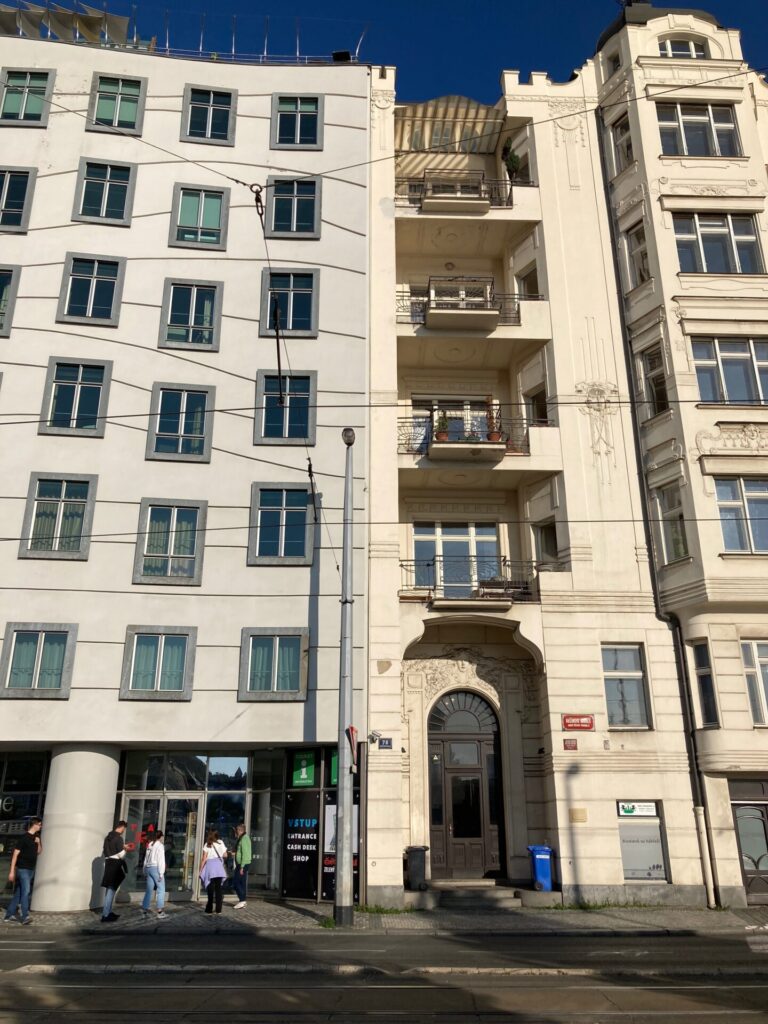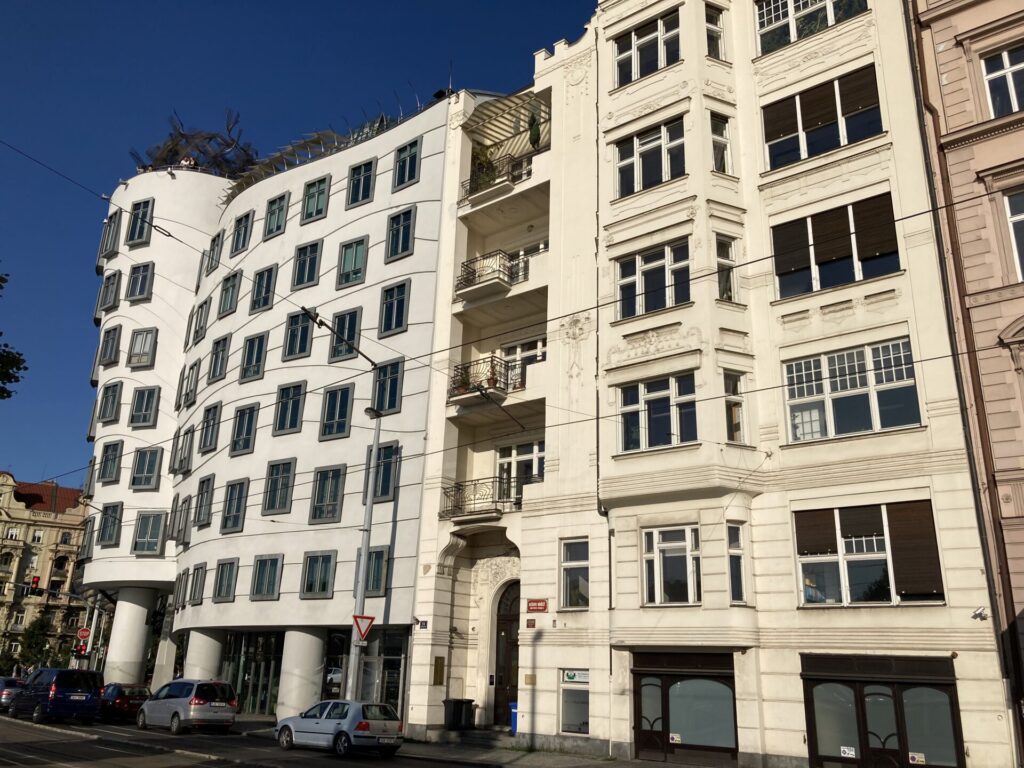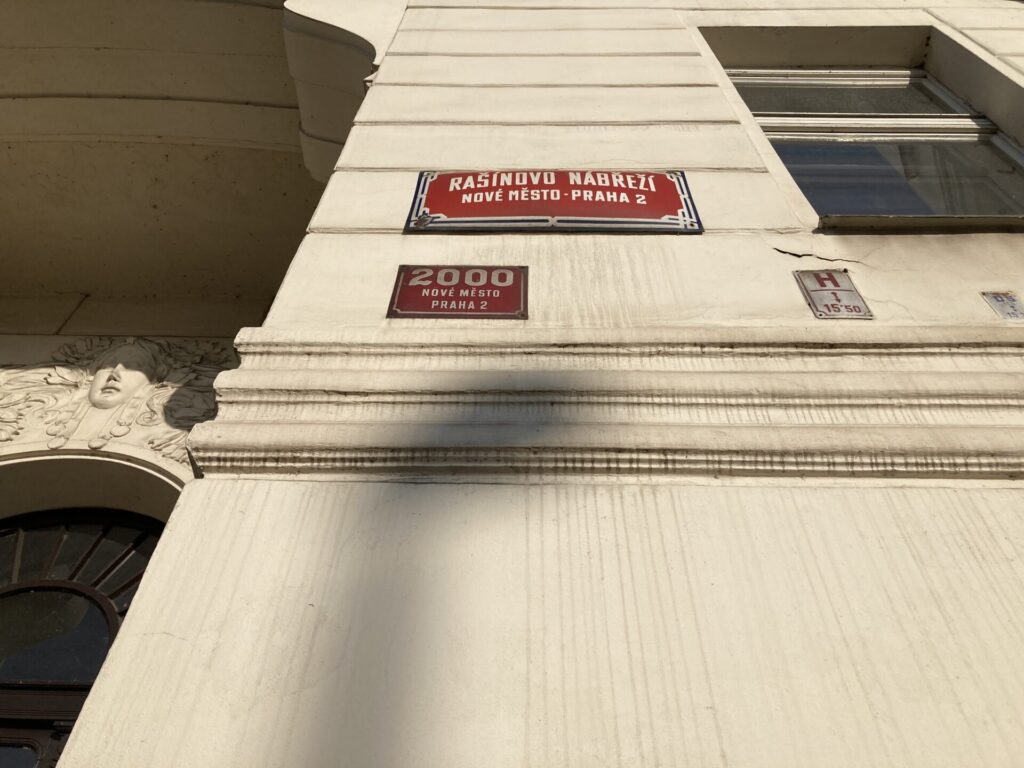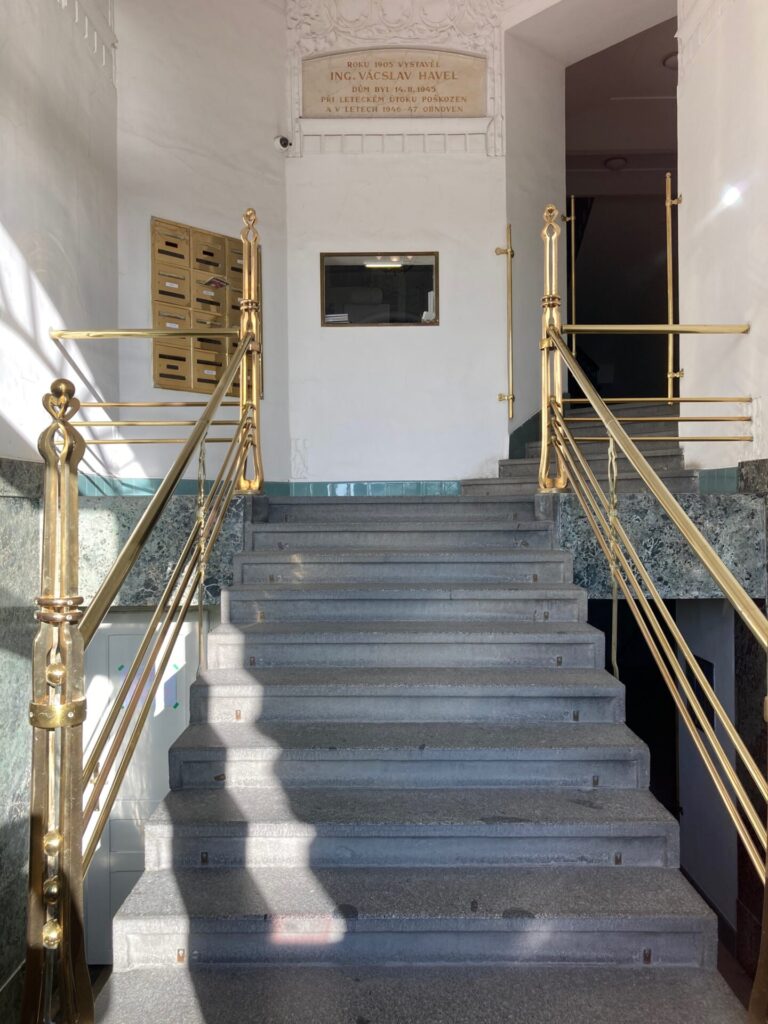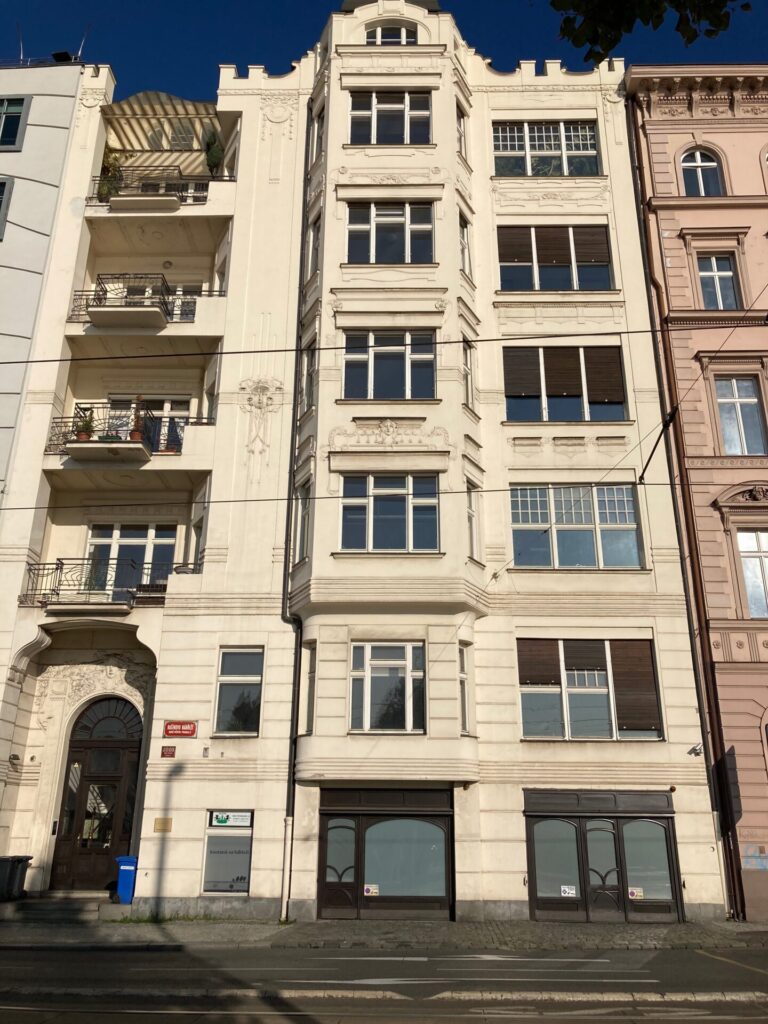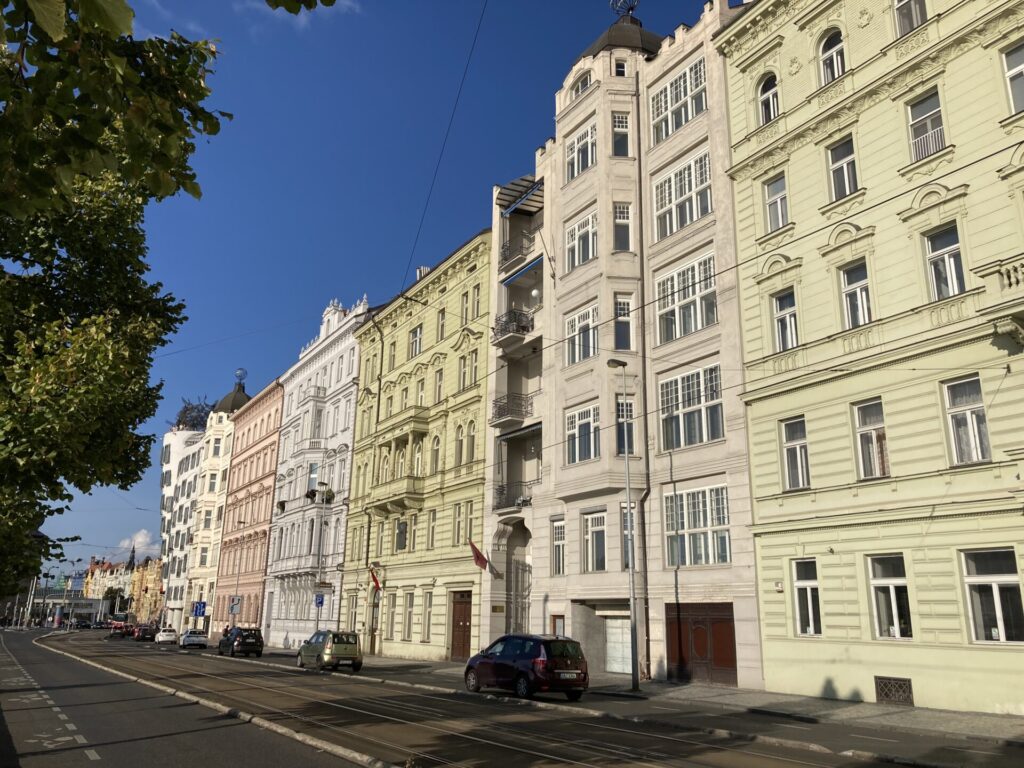On Jirásek Square on the bank of the Vltava River stands a statue of a seated Alois Jirásek – a Czech writer who is one of the classics of Czech literature (1851 – 1930). Every Czech knows Alois Jirásek, and with a probability bordering on certainty, it can be said that every Czech has read at least one of his books (if there should be only one, it is quite likely that it was Old Czech Legends).
Although everyone knows Alois Jirásek in the Czech Republic, it cannot be expected that the writer, whose death passed almost a hundred years ago, will be just as famous abroad. Despite this, his statue is one of the most visited places in Prague.
Hundreds and hundreds of people either sit at the statue’s base, stand in front of it striking a strange pose, while others take pictures of them. However, it has nothing to do with Jirásek. Across the street from his statue is the Dancing House, also called Ginger & Fred, the most photographed house in Prague. Tourists are attracted to it in the same way they are to the Leaning Tower of Pisa – they stand on the lawn in front of the statue of Alois Jirásek and position their palms as if they were holding up the Dancing House.
If they crossed to the other side of the embankment, they would notice an exciting house directly adjacent to the Dancing House. Here you’ll see is a house built in 1905 by Vácslav Havel, the grandfather of our president Václav Havel. Václav Havel was born in this house and lived here for much of his life. And he felt so comfortable here that after being elected president, he refused to live in the Castle but stayed “at home”.
He spent a total of 43 years of his life here. From his birth in 1936 until 1971, when he moved with his wife Olga to Dejvice. They came back in 1986 and lived here until 1993. (You can see the windows of Havel’s study in the photo – it’s the one on the third floor. The windows are partially covered by a wooden sunscreen.)
A plaque in the house’s entrance hall says: “Built in 1905 by engineer Vácslav Havel. The house was damaged in an air raid on February 14, 1945, and rebuilt in 1946-1947.”
There‘s a simple memorial plaque at the entrance to the house, which was installed here on the eighth anniversary of Havel’s death. It is a sheet of paper embedded in resin. On the paper is written: “I lived here too. Václav Havel.”
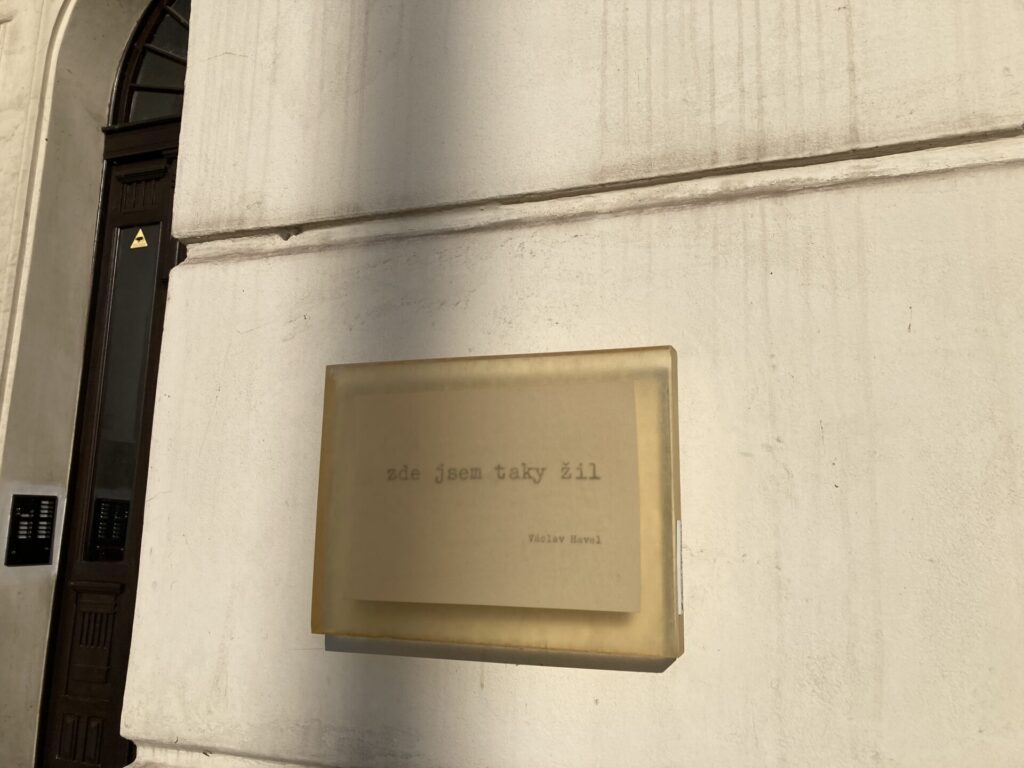
By the way – if you walk upriver, the fourth house in the row is strikingly similar to Havel’s home. In fact, the houses are identical, differing only in the color of the facade. And it’s no coincidence – this house was also built by Havel’s grandfather Vácslav Havel, a famous builder who also built the Lucerna Palace on Wenceslas Square. He died in September 1921 of a stroke that struck him in the Great Hall of Lucerna Palace.












